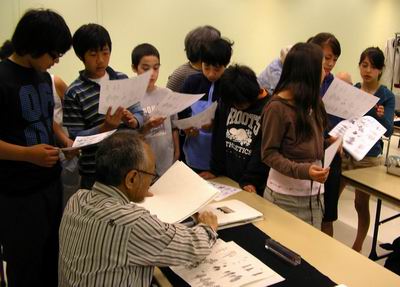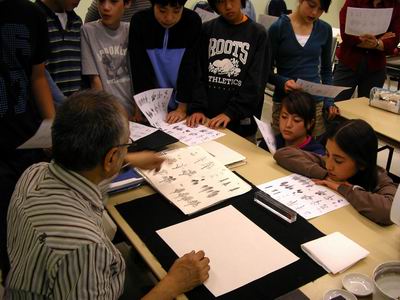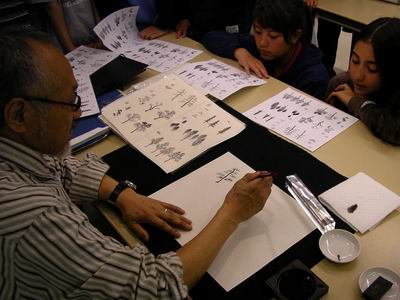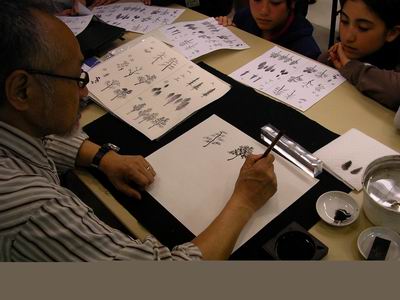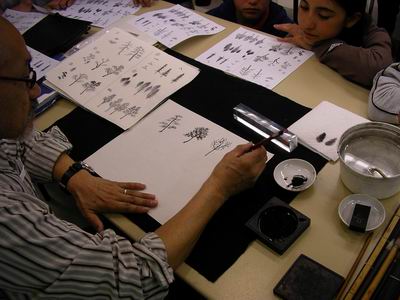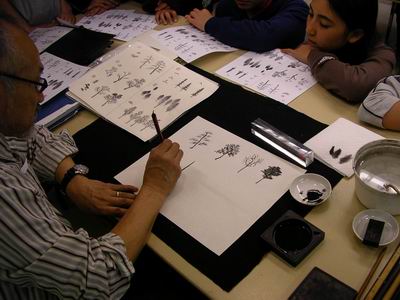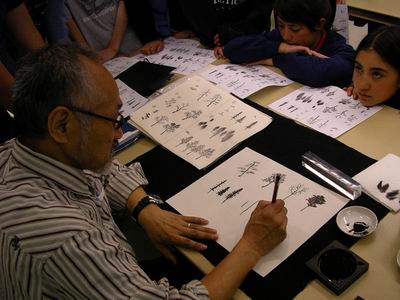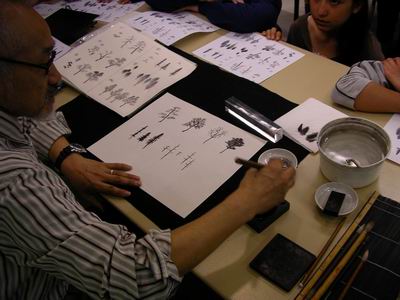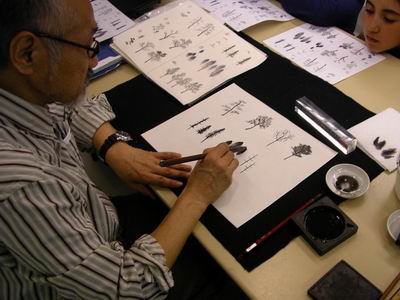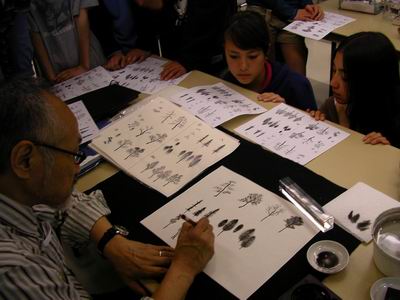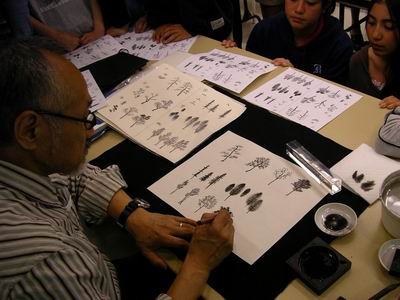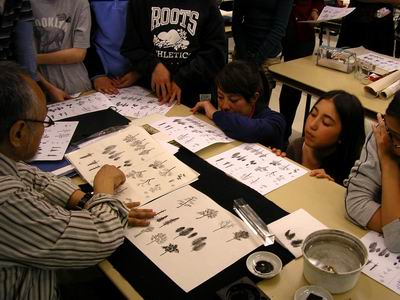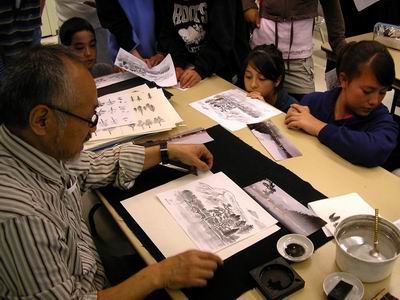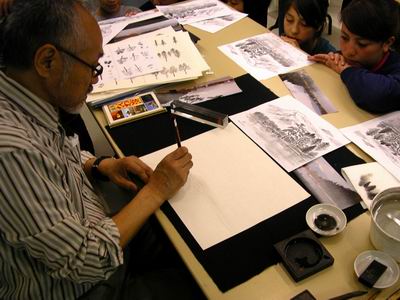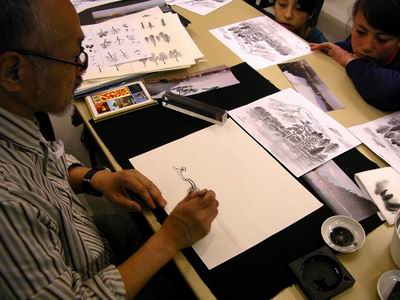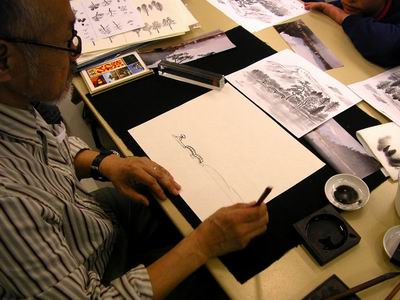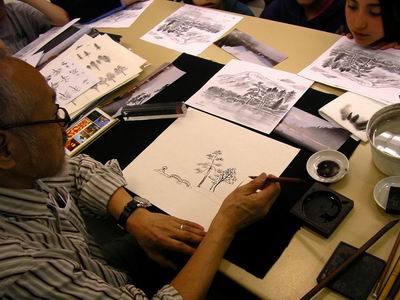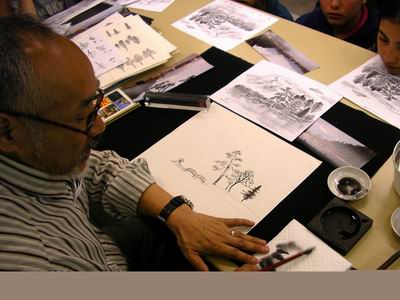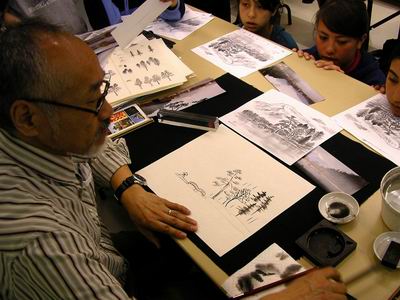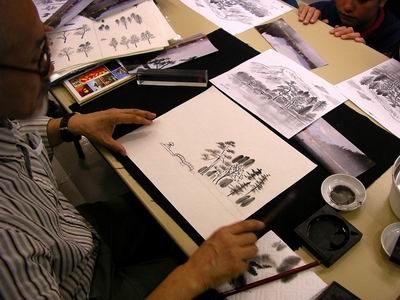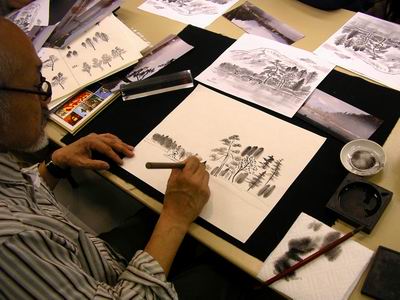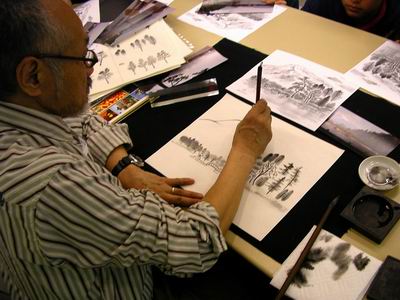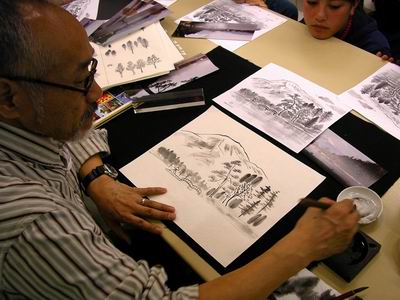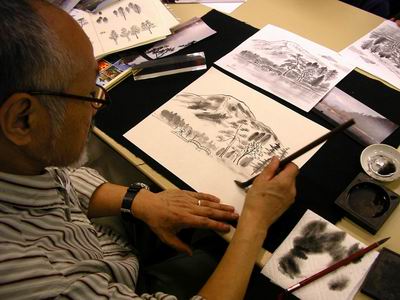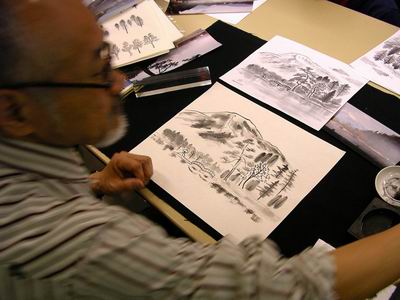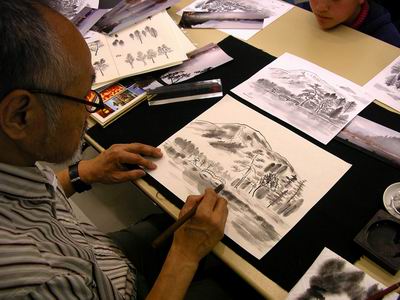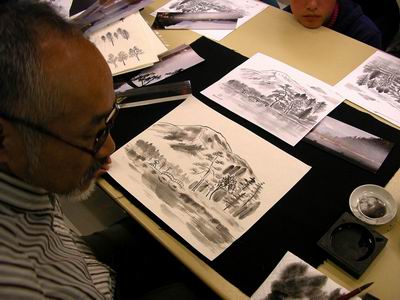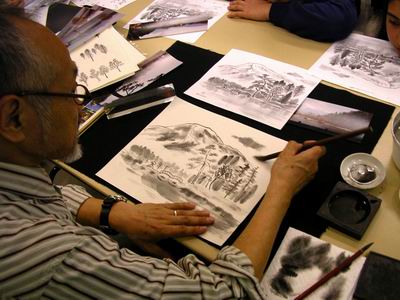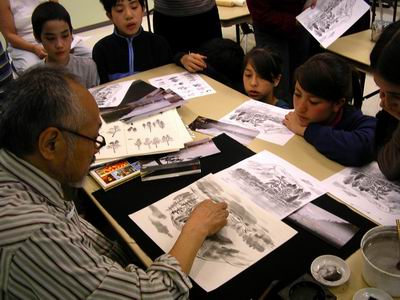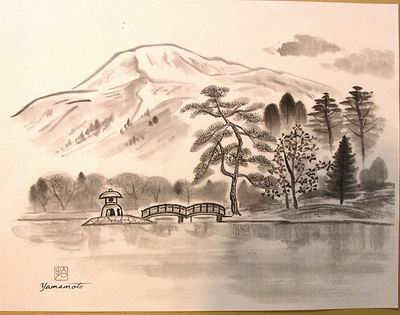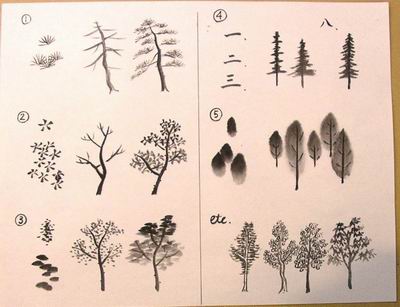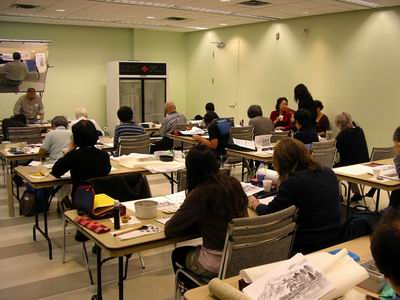Landscapes with Hiroshi Yamamoto - May 12th, 2007
Hiroshi Yamamoto brought along his students to a workshop on landscapes. This led to an interesting mix of younger and older participants learning a lesson in English and Japanese. Hiroshi, a well-known Toronto artist, is the chief instructor in sumi-e at the Japanese Canadian Cultural Centre. He also teaches at a Japanese school. In his workshop, Hiroshi worked exclusively in sumi-e ink.
The workshop began with a study of types of painted trees, which are used frequently in sumi-e paintings.
Hiroshi Yamamoto first painted the classic pine tree with its needles on the branches.
Then a tree was added with five strokes for a cluster of leaves on each branch.
Another tree was created with a trunk and some branches.
Leaves were added with a horizontal brush stroke over the trunk and branches.
Several more trees were added with tall thin trunks and leaves added with the horizontal, flat brush stroke.
Next came a few more trunk-and-branch tree structures.
Over the trunks and branches, Hiroshi Yamamoto used a large, thick brush to add the leaves in a vertical stroke that also used the flat of the brush.
Hiroshi added several variations of trees using the previous techniques.
Each tree had its own characteristics showing the many ways of painting trees.
Afterwards, Hiroshi Yamamoto reviewed the trees he had drawn. The trees were also included in a handout for the workshop.
Hiroshi turned to the landscape he would work on. He discussed the work with the workshop participants. Hiroshi reminded us that a painting was a composite of elements such as the water, shoreline, trees, mountain, and clouds.
A light stroke created the shoreline.
A pagoda was added and a bridge to it.
Hiroshi Yamamoto studied the work as he sometimes does before moving on to the other elements of the painting.
He then turned to the trees using forms drawn earlier.
A pine tree, a tree with with a few leaves and a tree with the horizontal brush stroke for leaves were added.
Skeleton trees were drawn that would use the vertical stroke for leaves.
After the trees were drawn, Hiroshi stopped again to look at the overall composition again.
Next came more distant trees in another part of the painting.
A mountain was sketched into the background.
Details were added to the mountain including some small, distant trees.
Moving to the foreground, Hiroshi Yamamoto added the water.
The water was still and reflected the trees on the shore.
Using broad stokes the water was completed.
The painting was almost finished.
Clouds were added by pressing the brush.
Hiroshi discussed the elements of the painting with the workshop participants in English and Japanese.
The finished painting united all the elements created earlier in a balanced, serene work. This painting is based on an actual scene from Japan where Hiroshi grew up.
This handout helped workshop participants in the creation of their trees for their landscape. It showed the strokes for the leaves and the strokes for the trunk and branches. Then it put the two together for the tree.
Everyone then began working on their landscapes.
Landscapes remain one of the fundamental icons of sumi-e painting. Hiroshi Yamamoto's workshop proved that the landscape will remain as challenging and as fascinating to sumi-e artists today as it always has in the past.
